The Big Draw Festival 2018: Play is well underway! As Festival co-creators across the globe work on the finishing touches for their Big Draw events we catch up with the team at The Walt Disney Family Museum to talk Puppets, Pencils and Play and their incredible packed events programme for #Play2018 on Saturday 13 October!
Interview with: Kate Coogan, The Walt Disney Family Museum’s Public Programmes Manager.

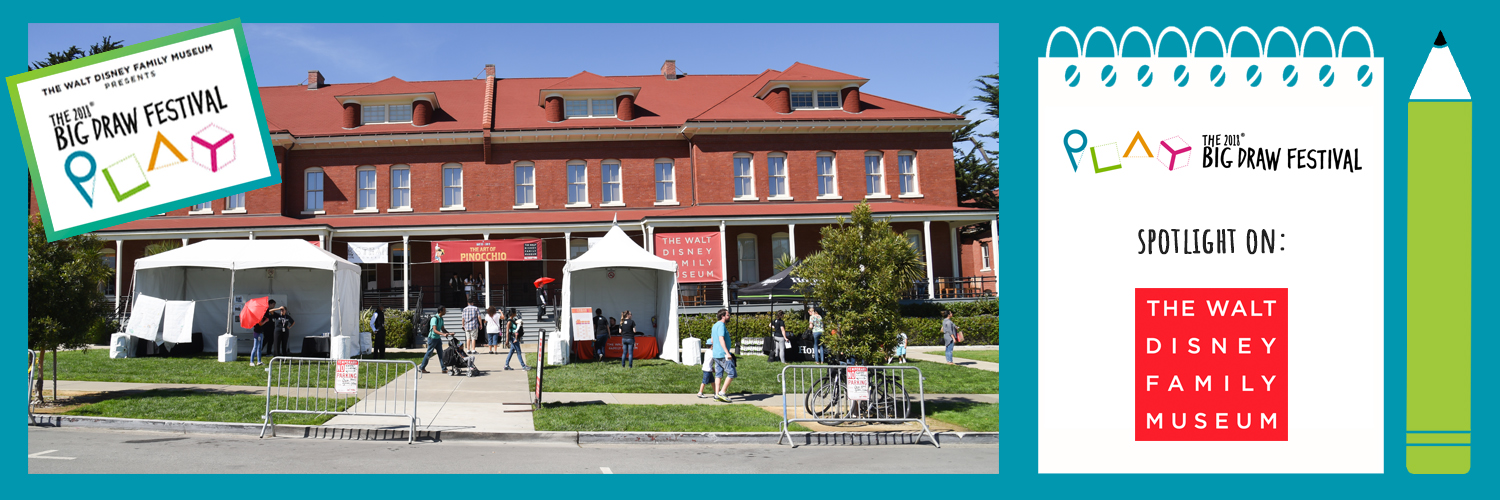
BD: Can you tell us a little bit about your work as Public Programmes Manager at The Walt Disney Family Museum [WDFM]?
WDFM: As The Walt Disney Family Museum’s Public Programs Manager, I have the pleasure of organizing a variety of events for our membership community and the general public to enjoy. These events range from our daily film screenings and lectures about the life and legacy of Walt Disney to community days such as the Big Draw and our annual Teen Animation Festival International (TAFI).
BD: For those of our readers who may not be familiar with The WDFM, can you offer a brief overview of the work that you do as an organisation, and how your programmes engage the public.
WDFM: At The WDFM, guests can discover and find inspiration in the remarkable life story of Walt Disney—the man who raised animation to an art, tirelessly pursued innovation, and created a distinctly American legacy that transformed the entertainment world. Located in the scenic Presidio of San Francisco, our museum is a 501(c)(3) non-profit organization that features interactive galleries with state-of-the-art exhibits narrated in Walt’s own voice alongside early drawings, cartoons, films, music, a spectacular miniature model of Disneyland, and so much more.
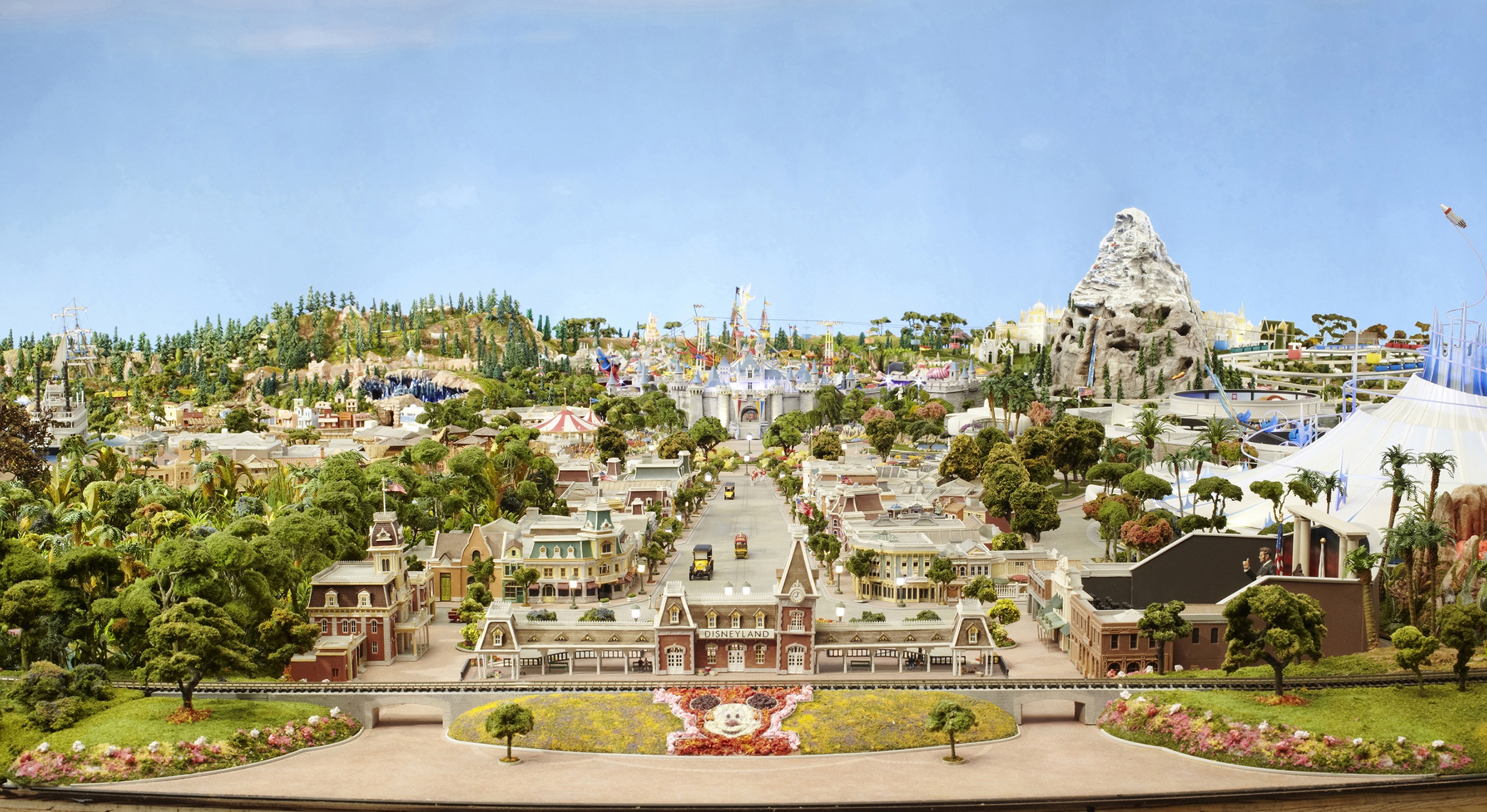
Disneyland Model, 2008-2009 Kerner Optical Photo by Cesar Rubio Photography, courtesy Walt Disney Family Foundation.
BD: As you already know, the Big Draw festival theme this year is ‘Play’. Given Walt Disney’s playful approach to work and bringing his characters to life, what role do you think that this theme plays at The WDFM?
WDFM: We feel that animation is one of the most playful art forms, allowing the artist to tell great stories by creating an endless range of characters, colours and emotions. We hope that when a guest visits the museum, they notice and observe the playful ways in which Walt entertained his audiences and are inspired to be imaginative in their own ways. On October 13, guests at our Big Draw event will be able to engage in playful art and animation activities that encourage creativity and fun.

The earliest known drawings of Mickey Mouse, 1928. Courtesy Walt Disney Family Foundation, ©Disney.
In 1928, after losing the rights to a character he had helped develop, Walt Disney had to come up with a new creation. His wife, Lillian, recalled, “He was talking about different things; kittens and cats, this and that, and the other. He kept talking about a mouse.” Walt later said, “And then the name came. I had Mortimer first and my wife shook her head, and then I tried Mickey, and she shook her head the other way, and that was it.”
BD: Do you believe that ‘Play’ is an important theme for both children and adults for creativity, development and well-being?
WDFM: Play is especially important in childhood and facilitates learning from very young age. However, play is also for the young at heart! Having opportunities to be playful, artistic, and creative can improve mental health, which in turn, enhances performance in so many other aspects of adult life. When done as a group, play can also be a valuable bonding experience for people of all ages.
BD: Walt Disney made incredible contributions to the world of art and drawing. We believe that drawing can be life changing; it's an amazing tool for communication, invention and expression. What role does drawing play in your everyday life, and your work at The WDFM?
WDFM: At home, I create personal art in the form of scrapbooks. These scrapbooks don’t involve a lot of drawing, per se, but I definitely make good use of markers while creating bubble letters! At The Walt Disney Family Museum, I am able to be artistically creative when planning for our community days, including the Big Draw. As a team, we usually get together prior to these events and create sample pieces for potential activities—it’s always fun to see my colleagues unleash their artistic talents! I also have the great pleasure of learning from many professional artists who give presentations or teach workshops at the museum. I also work closely with many amateur artists who submit films to our Teen Animation Festival International.
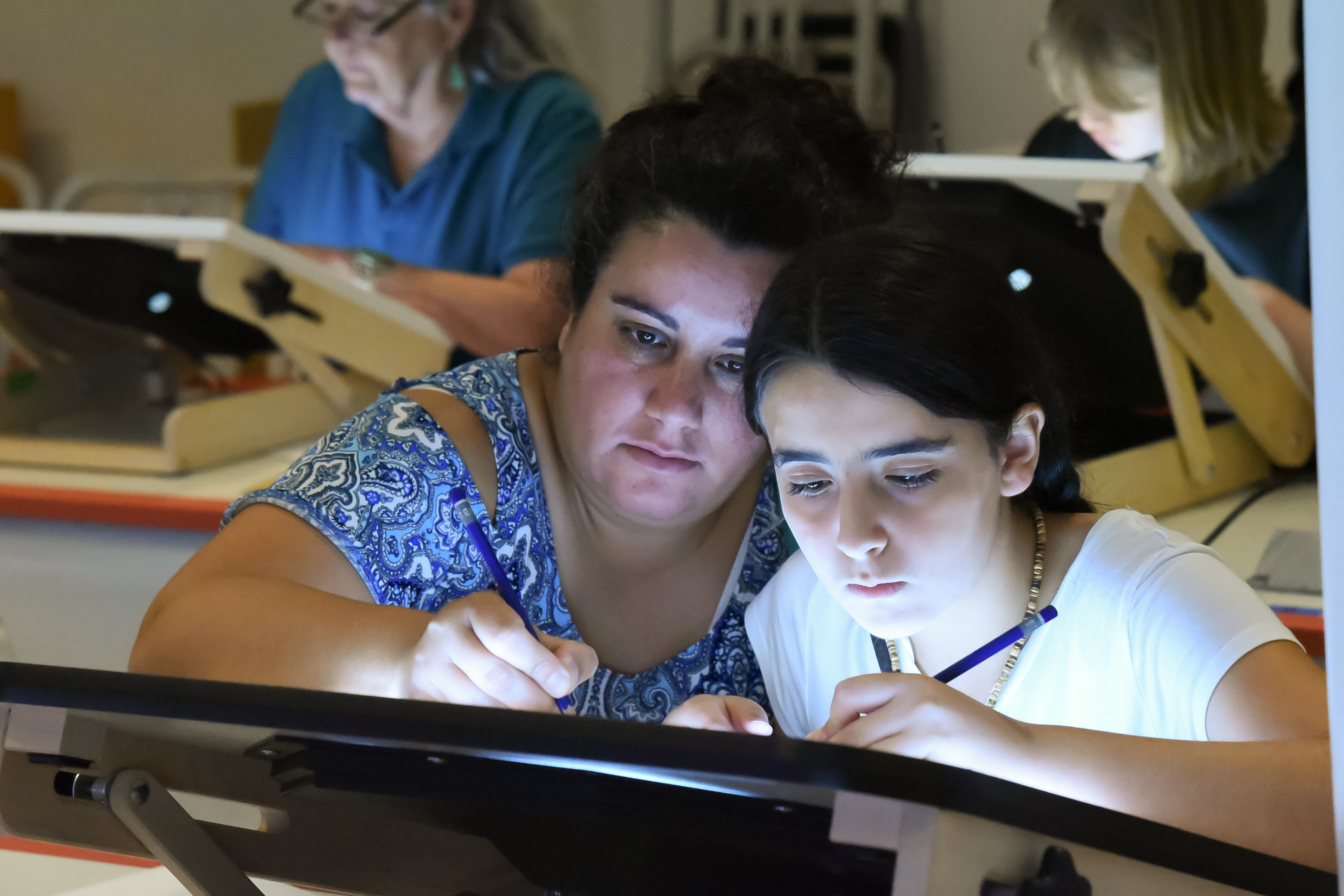
Photo by Frank Anzalone
BD: At The Big Draw, we promote the idea that visual literacy underpins not only the visual arts, but all education such as Maths, Science and Engineering. I understand that prior to joining The WDFM, you worked as a middle school teacher, and that you have a B.S. in Elementary Education from Loyola University Chicago. Given your extensive background in the educational sector, alongside your work at The WDFM, what is your opinion on the importance of drawing and visual literacy for young people in an educational setting?
WDFM: For most of my career, I have worked in the STEM field; it wasn’t until I interviewed for a position at The WDFM that I learned about the acronym STEAM and began learning how to incorporate the “A” into my work. I have always had a great respect for and admiration of the arts, and I do believe that visual literacy is an essential component of a well-rounded education. Drawing and other art forms unlock creativity and give children more tools with which to communicate their knowledge. The ability to engage creatively and communicate effectively are essential 21st Century skills.
BD: This is the third year that The WDFM has been involved with The Big Draw Festival. The event, held on the 13th of October, will be a playful and exciting opportunity for people of all ages to participate, observe, and enjoy drawing and storytelling in new and unusual ways. Can you tell us a little more about what people can expect from this year’s event?
WDFM: We are thrilled by the theme of “Play” and have planned an exciting line-up of activities for guests to enjoy. Most of the activities are drop-in programs and include some outdoor artistic fun, an opportunity to play musical instruments, and of course, an animation activity. We will also have a puppet theatre available, where guests can put on their own play, as well as attend two workshops with guest instructor and puppeteer Noel MacNeal, best known for his performance as Bear in Bear in the Big Blue House. You can read about the schedule of activities in more detail at waltdisney.org/the-big-draw
BD: Having now had two years of experience in coordinating these events, do you have any advice for anyone considering organising their own Big Draw event?
WDFM: We find that museum guests are most excited to engage in activities after seeing other visitors walking around with their completed art projects. We have also had a lot of success with guest instructors, who often bring new ideas that we wouldn’t have otherwise considered for the line-up of events and attract new audiences who might not know our museum exists. Organizers should take advantage of the wonderful themes that the Big Draw creates and shouldn’t be surprised by how excited the audience will be to participate in unique, hands-on activities.
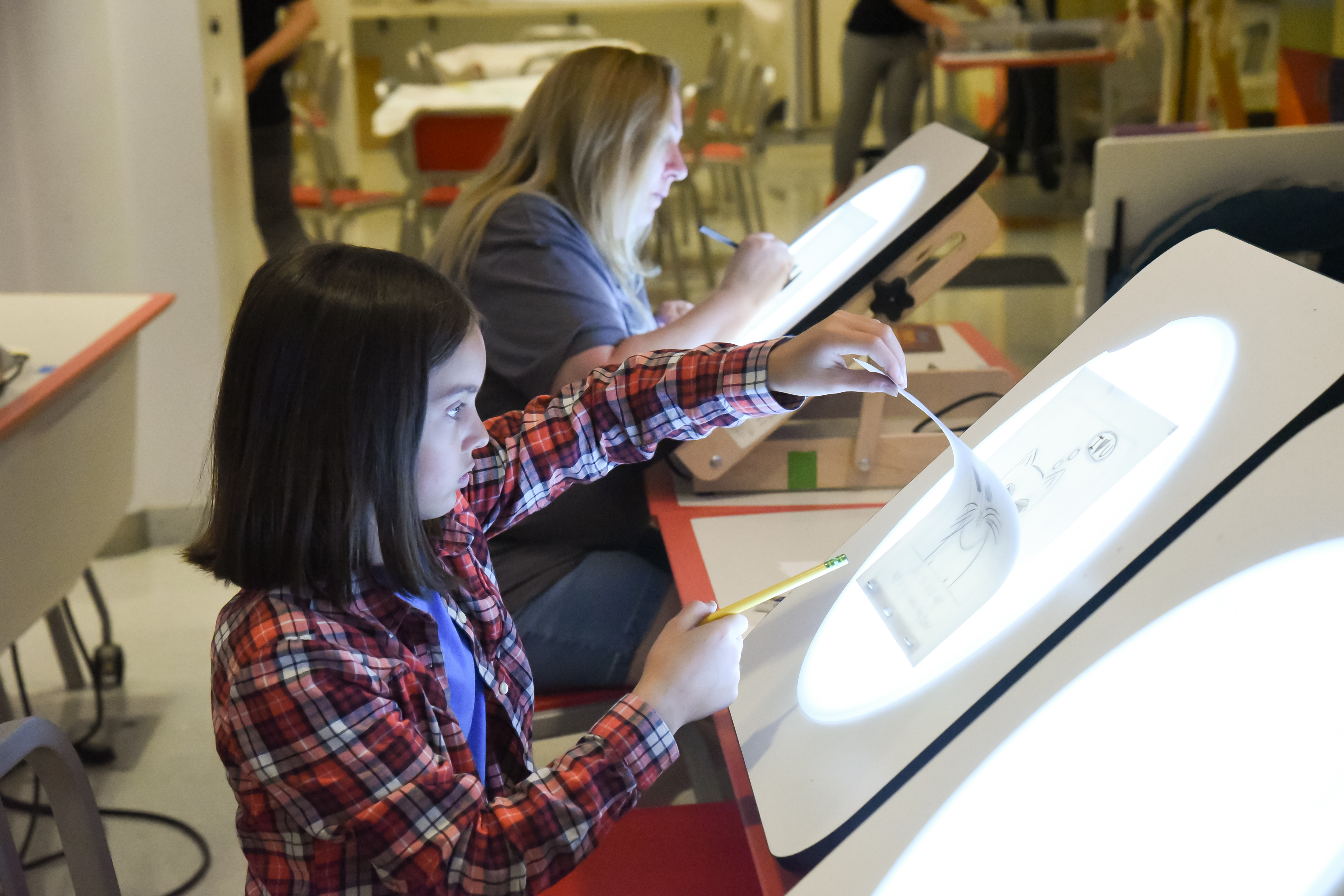
Photo by Frank Anzalone
THANK YOU TO KATE AND THE TEAM AT THE WALY DISNEY FAMILY MUSEUM!

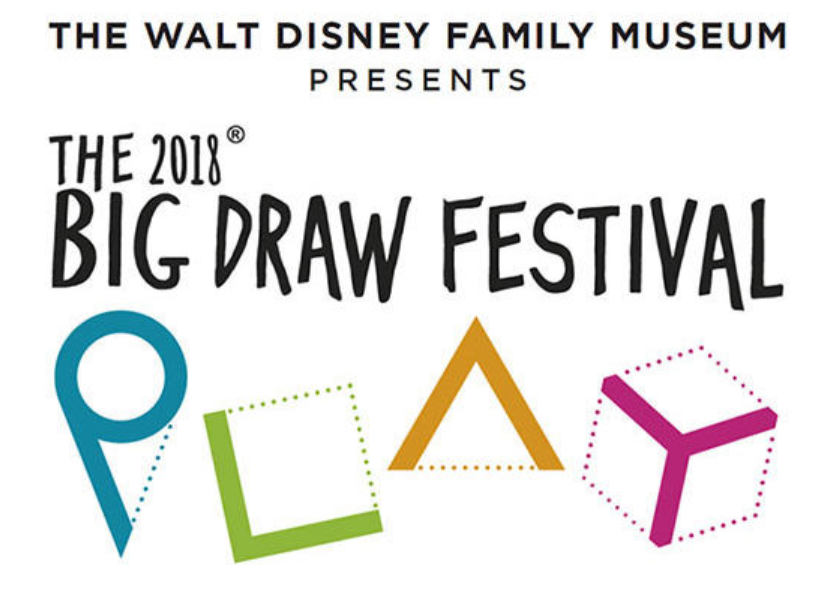
We hope you enjoyed our interview with Kate! If you have been inspired by her work at The Walt Disney Family Museum, why not become a part of the world’s largest drawing festival or find an event near you this autumn?
Visit The Walt Disney Family Museum for their #Play2018 museum-wide #TheBigDraw family event on Saturday 13th October to celebrate Walt Disney’s contributions to the world of art and drawing.
Interview: Matilda Barratt, Edited by: Rachel Price